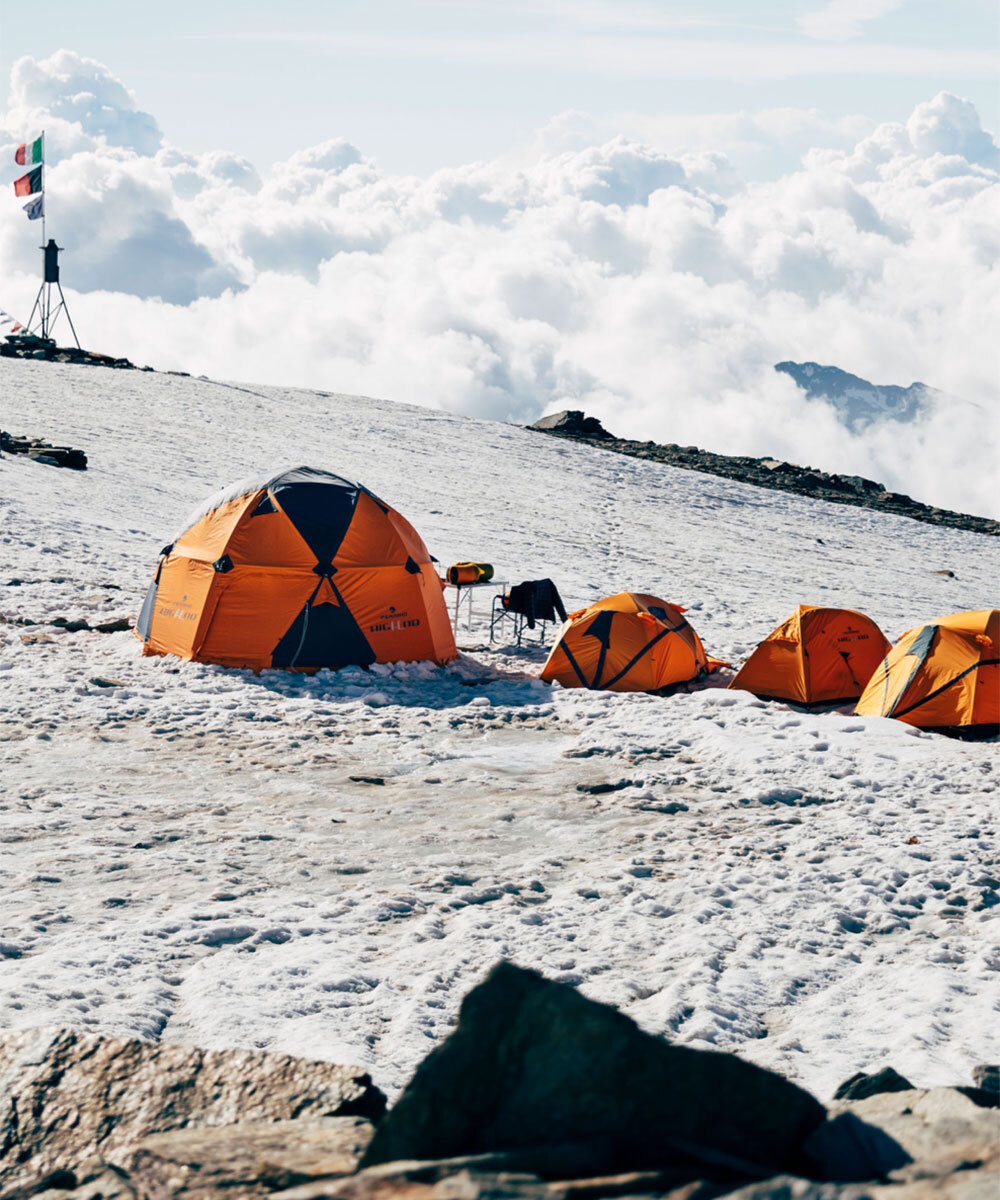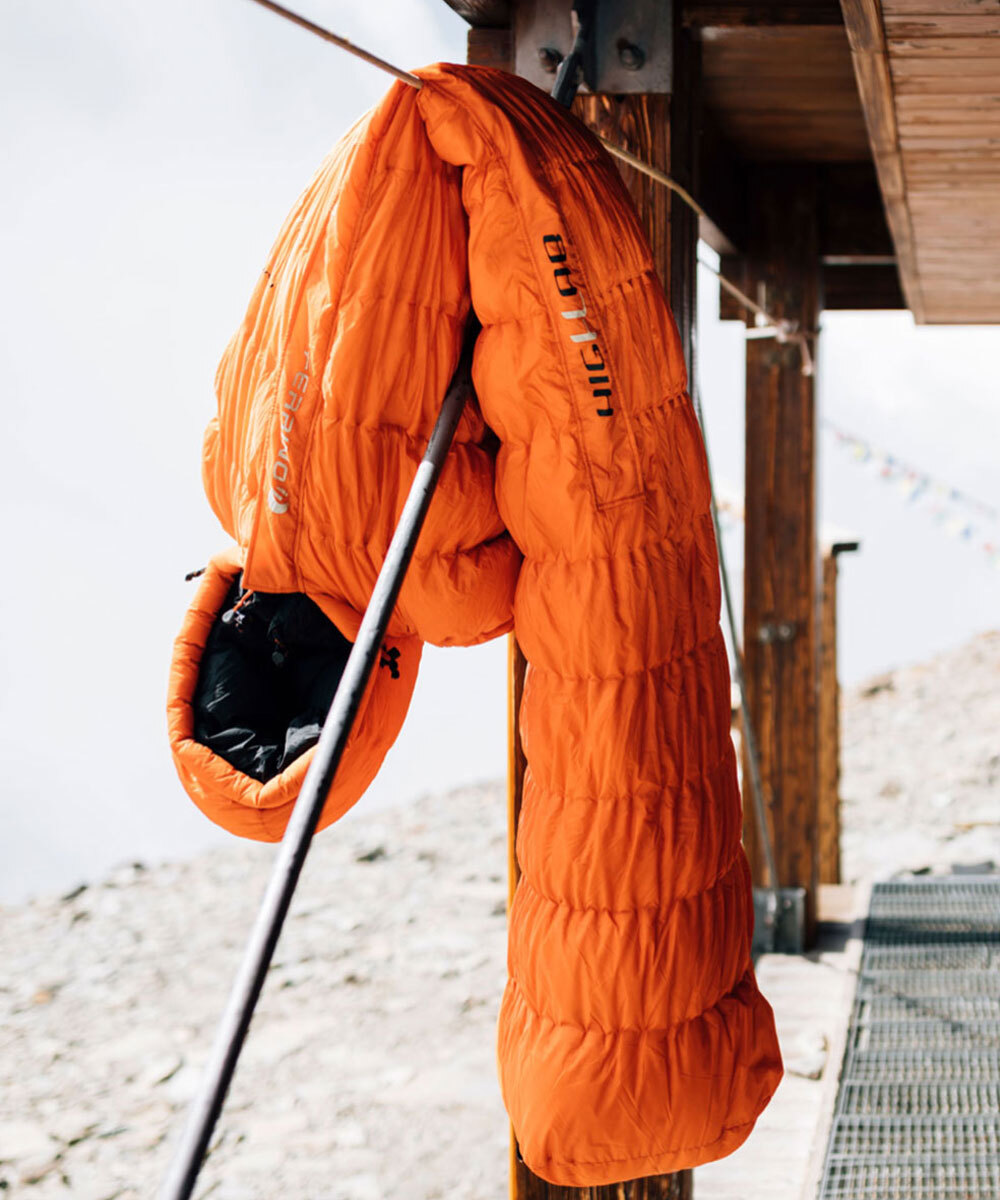Maintenance
Ferrino for Product Maintenance and Care
After-Sales: the relationship between customer and product at the centre
Our after-sales and repair service is always available to provide valuable advice for optimizing the maintenance of our products and managing repairs.
Ferrino products are the result of hard work combined with great passion, experience, and collaboration, with the aim of offering customers a durable, quality product that respects everyone involved and the environment.
This is why we are committed to conveying these values to our customers, suggesting they take care of their products with small, simple precautions to ensure they last as long as possible.

TENT
How to wash a curtain?
Hand washing with water and neutral soap is recommended, preferably using a soft brush. If absolutely necessary, a delicate machine wash is possible, but this is not recommended as it may damage the curtain fabric. Allow the items to dry thoroughly before storing, but do not use a dryer as it may further damage the fabric.
Damaged taping and zippers?
If the zipper tape is damaged, it is strongly advised not to use glue, as subsequent repairs are not possible. Contact our after-sales department for repairs.
How to remove resin from fabric?
To remove resin from curtain fabrics, we recommend rubbing the stain with a cotton ball soaked in olive oil. This will remove the resin, but residual stains may remain on the material.
How to avoid condensation in curtains?
Condensation in tents is a common phenomenon in camping and it is often not possible to avoid the formation of condensation.
Here are some tips that can help alleviate the problem:
- Keep the vents open and the perimeter skirt rolled up or rolled up.
- Laying a sheet on the bottom to insulate from soil humidity can be a valid help.
- If weather conditions allow, avoid cooking inside the tent as the production of water vapor would accentuate the phenomenon.
How to prevent ants from invading your tent?
Sprinkle talcum powder around the tent
Hand washing with water and neutral soap is recommended, preferably using a soft brush. If absolutely necessary, a delicate machine wash is possible, but this is not recommended as it may damage the curtain fabric. Allow the items to dry thoroughly before storing, but do not use a dryer as it may further damage the fabric.
Damaged taping and zippers?
If the zipper tape is damaged, it is strongly advised not to use glue, as subsequent repairs are not possible. Contact our after-sales department for repairs.
How to remove resin from fabric?
To remove resin from curtain fabrics, we recommend rubbing the stain with a cotton ball soaked in olive oil. This will remove the resin, but residual stains may remain on the material.
How to avoid condensation in curtains?
Condensation in tents is a common phenomenon in camping and it is often not possible to avoid the formation of condensation.
Here are some tips that can help alleviate the problem:
- Keep the vents open and the perimeter skirt rolled up or rolled up.
- Laying a sheet on the bottom to insulate from soil humidity can be a valid help.
- If weather conditions allow, avoid cooking inside the tent as the production of water vapor would accentuate the phenomenon.
How to prevent ants from invading your tent?
Sprinkle talcum powder around the tent

BACKPACK
How to wash backpacks?
Hand washing with water and neutral soap, using a soft brush, is recommended. For backpacks, it's recommended not to remove the armor or back panel. Allow items to dry thoroughly before storing.
How to remove resin from fabric?
To remove resin from backpack fabrics, we recommend rubbing the stain with a cotton ball soaked in olive oil. This will remove the resin, but residual stains may remain on the material.
Is it advisable to remove the internal armor?
For backpacks, it is recommended not to remove the internal armor or the back panel, as reinsertion could be difficult.
How do you attach accessories to your backpack?
The section dedicated to the product sheet contains all the information relating to the backpack's accessories.
Furthermore, the presence of video tutorials in the dedicated section of the site, where present, facilitates and facilitates the understanding of the insertion of accessories.
Hand washing with water and neutral soap, using a soft brush, is recommended. For backpacks, it's recommended not to remove the armor or back panel. Allow items to dry thoroughly before storing.
How to remove resin from fabric?
To remove resin from backpack fabrics, we recommend rubbing the stain with a cotton ball soaked in olive oil. This will remove the resin, but residual stains may remain on the material.
Is it advisable to remove the internal armor?
For backpacks, it is recommended not to remove the internal armor or the back panel, as reinsertion could be difficult.
How do you attach accessories to your backpack?
The section dedicated to the product sheet contains all the information relating to the backpack's accessories.
Furthermore, the presence of video tutorials in the dedicated section of the site, where present, facilitates and facilitates the understanding of the insertion of accessories.

SLEEPING BAG
How to wash, use, and store sleeping bags?
For sleeping bags with synthetic filling:
If the sleeping bag has synthetic padding, it can be washed delicately in the washing machine at 30° without using fabric softener.
It is recommended to put two or three tennis balls in the washing machine so that the padding swells as it originally did when dry.
For down sleeping bags:
Down sleeping bags require much more gentle washing, especially when drying, where you need to shake them several times to prevent the down from clumping at the bottom. For this reason, it's best to take them to the dry cleaners.
When not in use, it is recommended to store your down sleeping bag in a closet, hanging it up or folded like a duvet, and not in its case or compression bag.
Attention!
For both synthetic and down-filled sleeping bags, excessive washing damages the filling: for this reason, it is recommended to use a cotton, silk, or disposable sleeping bag liner in combination with the sleeping bag.
For sleeping bags with synthetic filling:
If the sleeping bag has synthetic padding, it can be washed delicately in the washing machine at 30° without using fabric softener.
It is recommended to put two or three tennis balls in the washing machine so that the padding swells as it originally did when dry.
For down sleeping bags:
Down sleeping bags require much more gentle washing, especially when drying, where you need to shake them several times to prevent the down from clumping at the bottom. For this reason, it's best to take them to the dry cleaners.
When not in use, it is recommended to store your down sleeping bag in a closet, hanging it up or folded like a duvet, and not in its case or compression bag.
Attention!
For both synthetic and down-filled sleeping bags, excessive washing damages the filling: for this reason, it is recommended to use a cotton, silk, or disposable sleeping bag liner in combination with the sleeping bag.
